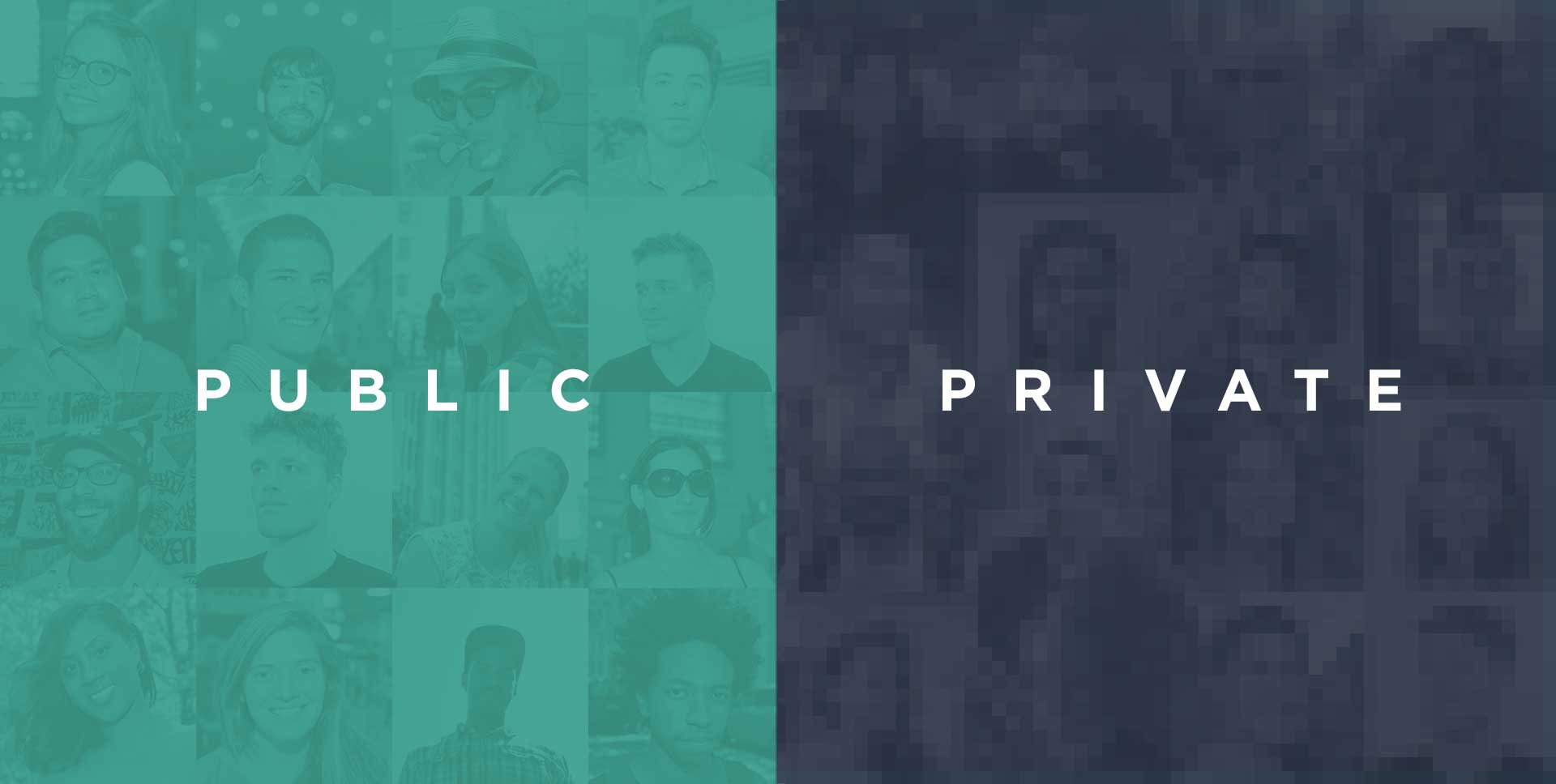
A database of faces is a key element that is needed when working with any facial recognition technology. Without it, an algorithm can not ensure accuracy when comparing or recognizing unknown images to older identified images just like without a battery, your computer won’t turn on.
This base data is important to use so you can test or train your algorithms against it, however do you create your own database of faces or do you use an existing database online?
Public databases are usually used as a point of reference for companies to measure against, or used to build prototypes while private databases are used to recognize specific faces against the algorithm, set rules a computer follows.
Most companies use private databases, which you can read more about below, as public databases are more common with those who are trying to build their own facial recognition engine or measure up against celebrity photos.
Private Face Recognition Databases
Private facial recognition databases contain images that you, or your company, have full control of. This also means that the specifications are to your liking; i.e. resolution, audience, demographics, age, background, lighting, etc. By using your own images you may experience better applied results with the software or product you are creating.
Collecting your own images may seem like a lot of work but if you have a library of photos from company events, activities, or customer scans then you may already have a database that you can use. For example, if you manage an event company your customers may have their photos taken before or during an event. These photos can be used as your private database of faces.
If you do not have a library of faces, no worries. You can easily create a database of faces as long as you have a camera, a subset of people to photograph, and decent lighting. This will also allow you to create, or follow, face analysis best practices when collecting images. You can control the lighting, the angles at which the photos are taken, how many angles are taken, the emotional response, background, etc. You can even take it further and create different sets of images as well.
Please note, when collecting your own images it is highly important to make sure you maintain your subject’s privacy and rights. Only use photos that you have rights to use which should be obtained through signature by the people in your photos.
Private Database Pros
- Full control over data, full control over quality
- Easy way to test and integrate with a facial recognition service
- If available, current photo library can be used, saving time and money
- Real life data vs test data yielding more accurate results
Private Database Cons
- Taking photos could be timely and costly depending on the specifications
CASE STUDY
Cruise Line Photo Library
Cruises offer an easy, stress-free, way to get away and see the world. They also offer their companies an easy photo library. Before a passenger boards a ship, their photo I.D is usually scanned or a photo of them is taken and logged into the cruise ship database. This is done to ensure safety and log all the passengers, and it also is a great way to create a database of faces. Every passenger must have a photo taken, all photos are taken with the same type of camera, ensuring consistency and accuracy, and all photos are of customers and are logged.
Perhaps your company does something similar? If so, you already have your database and your next step to facial recognition is simple, now you just need Kairos' facial recognition API.
Public Face Recognition Databases
There are many different databases available for you to use for free online and most of them have been created by researchers and universities. This ensures the quality is top notch. The choice of which database to use, well that’s up to you.
However, the best database for you may depend on the photo specs (lighting, demographics, expressions, etc.) or the data specs (i.e how will the algorithm behave with different aged siblings v twins).
Public Database Pros
- No photography required, work is already done for you
- Easy way to quickly train or test an algorithm
Public Database Cons
- No control over data specifications could lead to issues during testing
- Research required to find the right database to use
If the public database is the route for you we have done the hard work for you - check out our list of facial recognition databases.
Please note, when using a public database of images ensure for your own safety that the images being used are for public use. It is also important to go over their terms of use to avoid any confusion of how the images can and cannot be used.
EXAMPLE DATABASE
Labeled Faces in the Wild (LFW)
A well known, and well put together, database of faces for facial recognition is Labeled Faces in the Wild created by the Computer Science Department at the University of Massachusetts. The data set is massive, it contains more than 13,000 images of faces from the internet with three different angles.
You can view a few ways that the team has used their own database to give you some ideas on how you might use it yourself.
It’s All About the Data
Using a database with facial analysis ensures accuracy and quality results as well as feeding it through a machine learning algorithm. Using machine learning, and deep learning, algorithms will improve the future accuracy, results, and performance yielding better results for your business goals.
“Garbage in; garbage out.”
In our opinion, the best database for you will depend on your needs. However, “garbage in, garbage out (GIGO)” applies here in regards to the quality of your results determined by the quality of your data. When you are in control of the creation of the data, or are using images you already have, it may better power your product or service.
No matter the path you choose you can quickly set-up a test using the Kairos facial recognition API. Alternatively please contact us today if you have any questions about your face recognition database. We’d love to help.

Cole Calistra
Cole is the CTO at Kairos, a Human Analytics startup that radically changes how companies understand people. He loves all things cloud and making great products come to life.